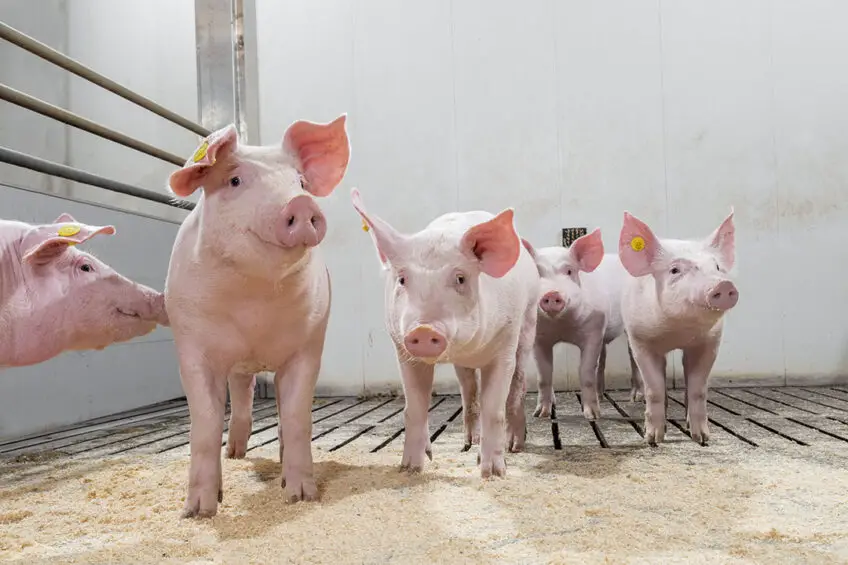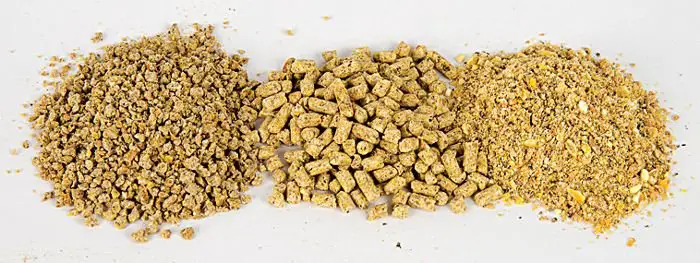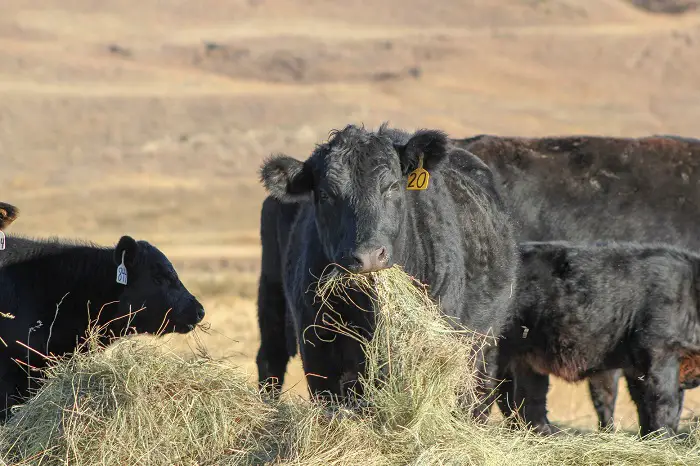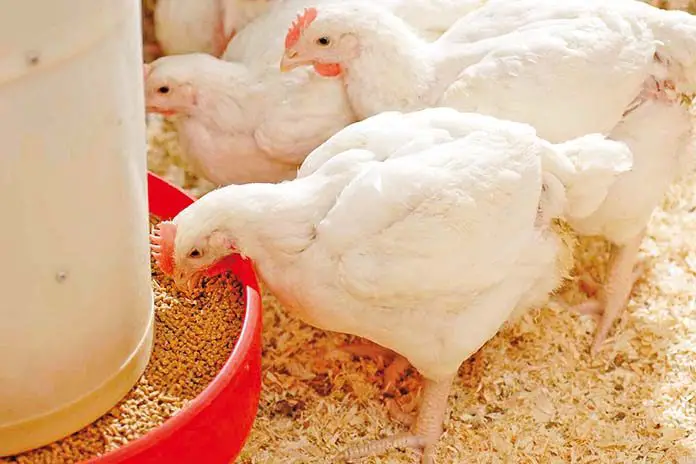Pigs are omnivores which means they can eat both plants and animals which means they can almost anything alive. Pigs can scavenge in nature eating grains, roots, shrubs, and small animals this extensive diet makes the feeding of pigs relatively easy exercise as long as their nutrient requirements at each stage of growth are known. The diverse range of feed resources that pigs can utilize also helps improve the profitability of pig enterprises if careful evaluation of available resources is done and the most cost-effective ones are chosen. Pigs can also be fed on practically anything that humans eat and throw away, are also very efficient at converting any feed to meat than most domestic animals. However, feed still accounts for about 70% of the cost of pig production so a critical eye has to be kept on what feed the pigs are getting and if it’s cost-effective to feed.
Contents
Phase Feeding Pigs
To improve the profitability of a pig enterprise wastage should be avoided at all costs, pun intended, because feed accounts for a significant chunk of the cost of pig production. Proper housing and feed trough design help eliminate physical feed wastage but wastage can also occur by feeding the wrong type of feed to pigs. Pig feeds should be designed to provide the right amount of nutrients required by the pig at each stage of its life. An over or undersupply of nutrients leads to underperformance of the pig and wastage where oversupply occurs. For example, if you supply excess protein in a pig feed the pig will convert the expensive protein into fat which is a waste as fat should come from cheap energy sources.
Piglets
Young pigs require a type of feed with more protein than energy so their feed will be a higher protein feed to support rapid growth. Piglets can be given solid feed from weaning up to eight weeks of age.
Growing and Finishing Pigs
In the growth phase, the feeds are lower in protein than piglet feed but higher in energy to put on more muscle and fatten the animal ready for market. Most pigs are marketed at plus 70 kilograms and they need to have the right mix of meat and fat, this is largely determined by the type of feed.
Adult or Breeding Pigs
Breeding sows and boars need feed to maintain their body condition so that they can mate and reproduce. The feed should provide enough nutrition to maintain the pigs without them getting too fat as this affects their reproductive performance. Pigs will typically eat 4% of their body weight, this is a useful measure when feeding all classes of pigs.
Pig Feed ingredients
For commercial pig production, there are some basic sources of required nutrients for feeding pigs some of these ingredients can be classified as feed themselves. Grains are the main energy source for most types of pig feed and soya is the main protein source.
Energy
Energy is required for all bodily functions from growth to respiration, and reproduction. Energy for pig feed comes mostly from grains like maize, sorghum, wheat, broken rice, cassava and barley. Other sources can be fats and oils from both plant and animal sources.
Protein
To build flesh which is the product that pig farmers are aiming for protein is required in the feed mainly from soybean meal, sunflower, meat bone meal, and cottonseed meal
Fiber
For proper digestion, pigs need some amount of fiber in their feed, and a wide variety of by-products from the milling industry are used to supply this fiber. Maize, rice, wheat, and distillers’ grains are used to provide fiber and some energy in the feed.
Vitamins and Minerals
Pigs need vitamins and minerals to maintain a healthy balance in their bodies and support key processes such as growth and reproduction. Most vitamins and minerals are supplied through specialized vitamin mineral packs that are added to feed.
Typical Requirements for Growing Pigs
| Feed | Crude Protein | Energy (Mj/kg) | Period | Feed (kg/day) |
| Pig Creep | 21.0 | 12.5 | Day 7 to 28 | 0.375 |
| Pig Weaner 1 | 20.0 | 12.8 | Day 29 to 49 | 0.500 |
| Pig Weaner 2 | 18.0 | 13.0 | Day 7 to 28 | 1.125 |
| Pig Grower | 16.0 | 13.2 | Day 7 to 28 | 2.500 |
| Pig Finisher | 15.0 | 13.5 | Day 7 to 28 | 3.000 |
Concentrates and Complete Pig Feeds
There are two types of commercially available pig feed produced globally that is pig concentrates and complete feeds. Most pig farmers will opt to use protein concentrates so that they have the flexibility of choosing energy sources to add to the concentrates and mix pig feed on the farm. If the farmer can source grain cheaper or grow it on a farm protein concentrates become a viable option. In cases where the farmer has no access to cheap grain or does not want to take up the risk and cost of mixing pig feed on the farm complete feeds are available for feeding commercial pigs.
Mash vs Pellets
Pig feed can be supplied in both mash and pellet form for feeding pigs, piglet diets are mostly supplied as pellet while adult diets are in mash form. Pelleting piglet feed improves feed intake and digestion as the starch in the feed is precooked and if soya is under processed the pelleting will improve its protein availability. Pellets are however a bit costly to produce hence the move to mash feed as the pigs grow, but wastage can be minimized by feeding pellets which could pay for the cost of pelleting.
Supplement Pig Feeds
As previously alluded pigs can be fed a wide array of feeds the following can be fed to pigs in conjunction with concentrates and/or complete feeds:
- Bakery waste
- Kitchen waste
- Fruit and vegetable scraps
There is also a movement to pasture-feed pigs, however, pigs cannot be solely raised on pasture as their ability to digest high-fiber feeds or forages is limited.
Water
The importance of water when giving pigs feed cannot be overstated as there is a correlation between water intake and feed intake. If pigs do not have access to clean drinking water they will eat less feed affecting their growth, water also makes up to 75% of meat so it is critical that water be always available.
Although pigs can eat almost anything it doesn’t mean we should feed them anything as some feeds can affect the growth and reproductive performance of pigs. Also, some feeds are suitable for some classes of pigs and not others and thus pigs should always be given feed that is appropriate to their weight and age.




